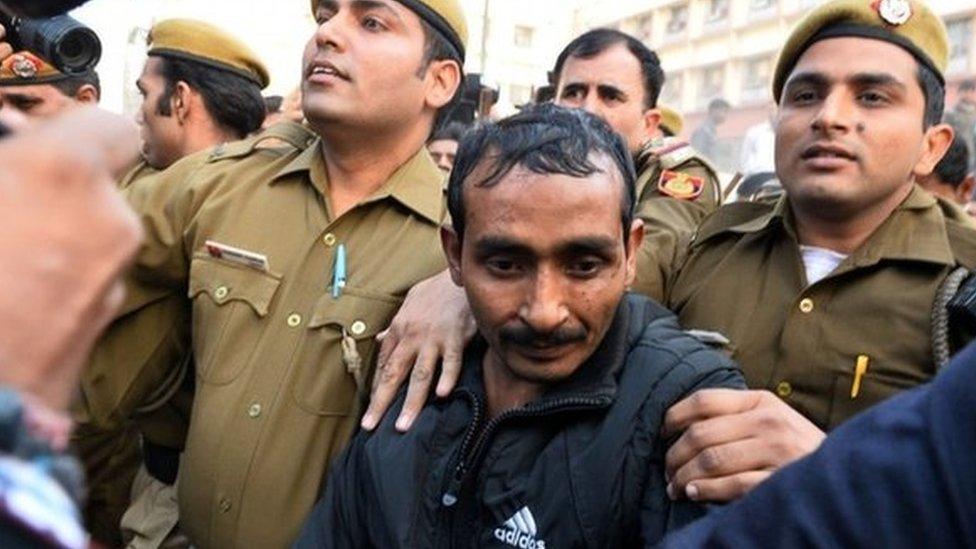Why India's Hindu nationalists are shedding their shorts
- Published
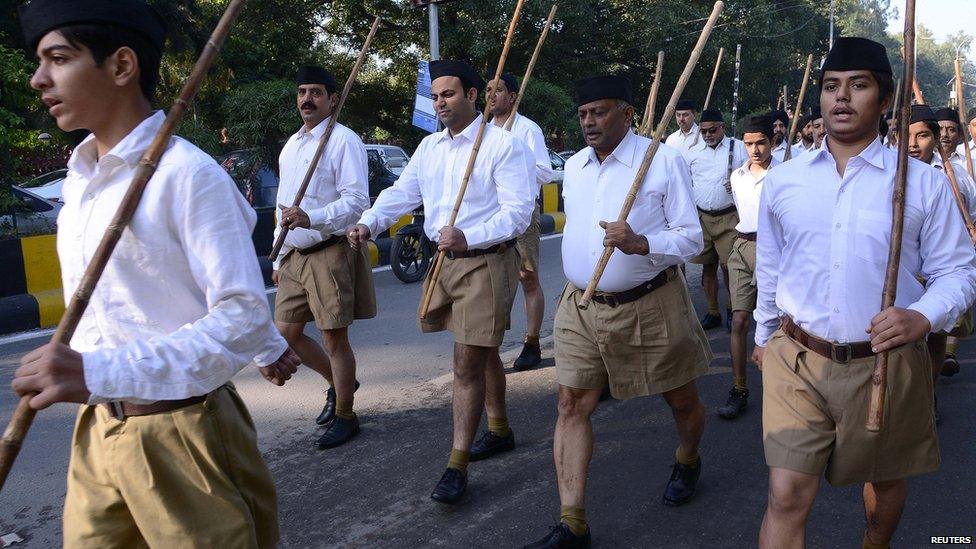
If the RSS sheds its shorts, the organisation will need to find half a million pairs of trousers
India's leading Hindu nationalist organisation, the Rashtriya Swayamsevak Sangh (RSS), is a formidable institution in almost every regard.
It is the ideological fountainhead for the family of Hindu groups that includes the country's ruling party, BJP or Bharatiya Janata Party.
The RSS is also the self-styled custodian of Hindu culture, and helped propel Narendra Modi to power, mobilising its vast membership to canvas on his behalf.
It boasts that it is the largest voluntary organisation in the world with six million members.
But the RSS has always been an exception to the time-honoured rule that nationalists have the best uniforms.
'Particularly unstylish'
RSS members are obliged to wear the kind of khaki shorts you would normally expect to see on a boy scout.
Shorts of any kind are rarely "fashion forward", but the RSS's version are particularly unstylish. They are pleated and cut to flare out at the bottom: apparently designed to make even the most muscular legs seem scrawny, and the most slim-lined knees seem knobbly.
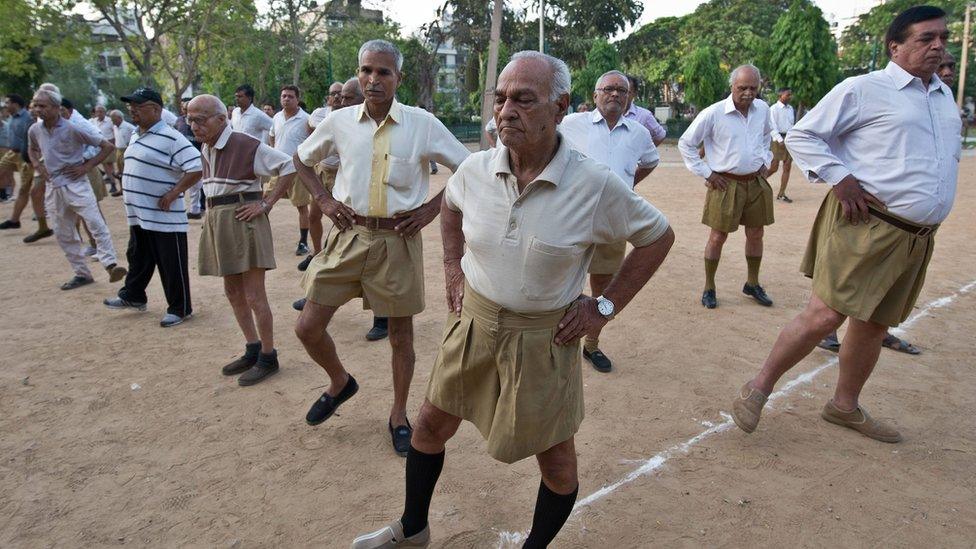
The khaki shorts are particularly unstylish

The RSS sees itself as an army battling for India's soul.
But that is set to change.
The Indian press is reporting that the RSS are going to shed their shorts once and for all in a bid to attract more young people.
The Indian Express, external quotes a senior "pracharak" - full time RSS worker - as saying that the two main leaders of the organisation are in favour of a new dress code. The plan is, the newspaper says, to replace the organisation's breezy shorts with full length trousers.
"No, it hasn't suddenly decided to stop singing paeans to cow urine or denouncing beef", opines , externalIndia's online news site, Scroll. "It's the khaki shorts, the leadership has decided. That's what's keeping the youth from signing up for early morning PT and minority bashing."
Weighty decision
The sartorial shortcomings of the RSS are surprising, given that the inspiration for the founding of the organisation lay in the example of the fascist movements in interwar Europe.
RSS founder Keshav Baliram Hedgewar is said to have borrowed from Mussolini's fascist black shirts for the movement's uniform. He might have been better following the sharper stylings of the Nazis, whose black leather coats, peaked caps and jodhpurs are still the last word in far-right haute couture.
So what is a fashion-conscious swayamsewak (or RSS follower) likely to be wearing in the years to come?
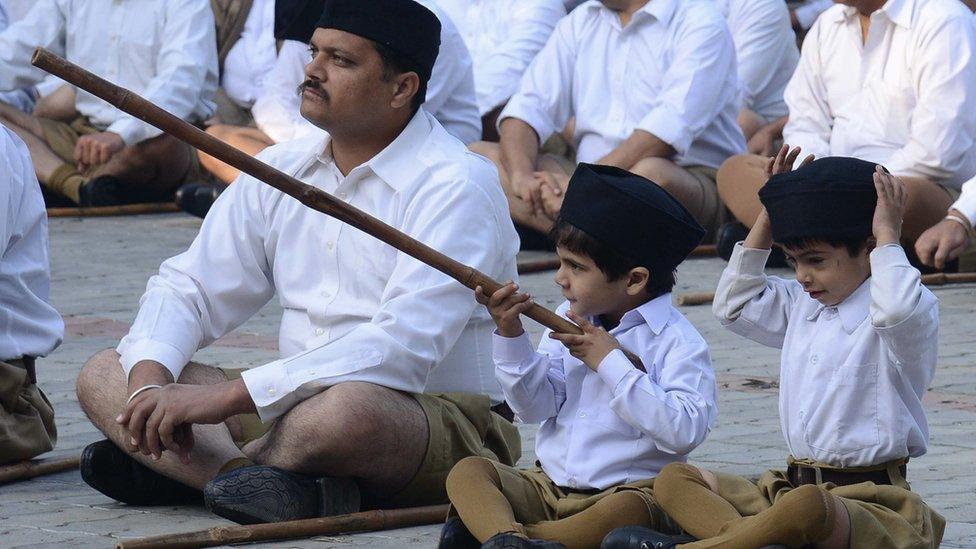
The RSS boasts that it is the largest voluntary organisation in the world with six million members.
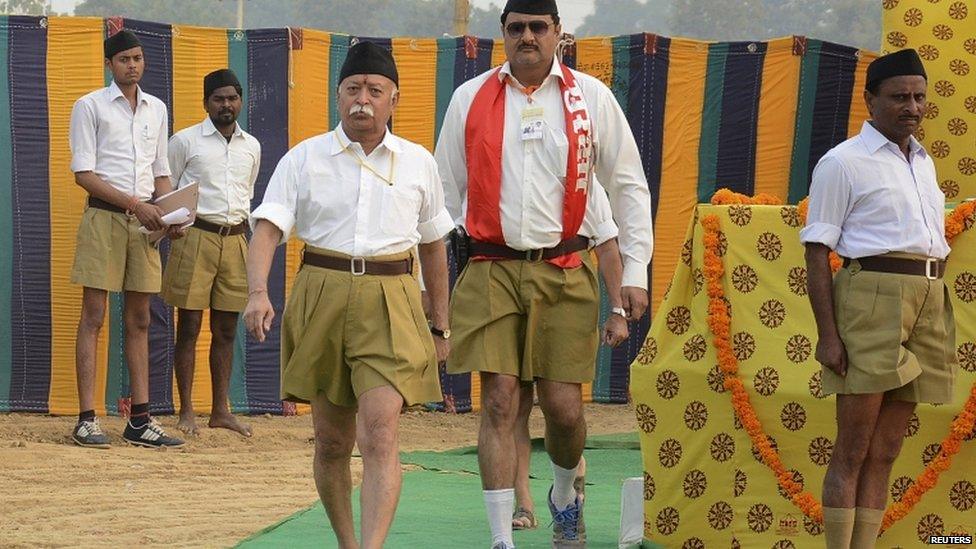
When the RSS replaced its canvas belt with a leather one in 2010, a shortage of belts meant even that change took two years to implement.
Apparently the RSS leadership has been discussing different colour combinations and trouser styles.
But changing the uniform is a weighty decision. There are reckoned to be some 50,000 "shakhas" or branches of the RSS. Even on the conservative assumption that each one has just 10 regular swayamsewaks that means the organisation needs to find half a million pairs of trousers.
When the RSS replaced its canvas belt with a leather one in 2010, a shortage of belts meant even that change took two years to implement.
And it is not clear why the organisation feels it needs to burnish its allure now.
Crucial role
The RSS claims its "saffron" ideology is more popular than ever. Recruitment has been steadily increasing. It says half a million new members signed up in 2013 and 600,000 in 2014, but since no official rolls are published those figures are impossible to confirm.
But whatever the swayamsewaks end up wearing, there is no question that under Narendra Modi the RSS plays a crucial role in the government of India.
Mr Modi had his political consciousness shaped by the organisation. As a young man he was a full time volunteer in the group and he has credited it for his work ethic, self-discipline and political success.
BJP President Amit Shah and seven members of the cabinet are former RSS members, including Home Minister Rajnath Singh - the architect of the government's controversial policy of banning cow slaughter.
The RSS sees itself as an army battling for India's soul. It seems it will soon also be an army in long trousers.
- Published20 October 2015
